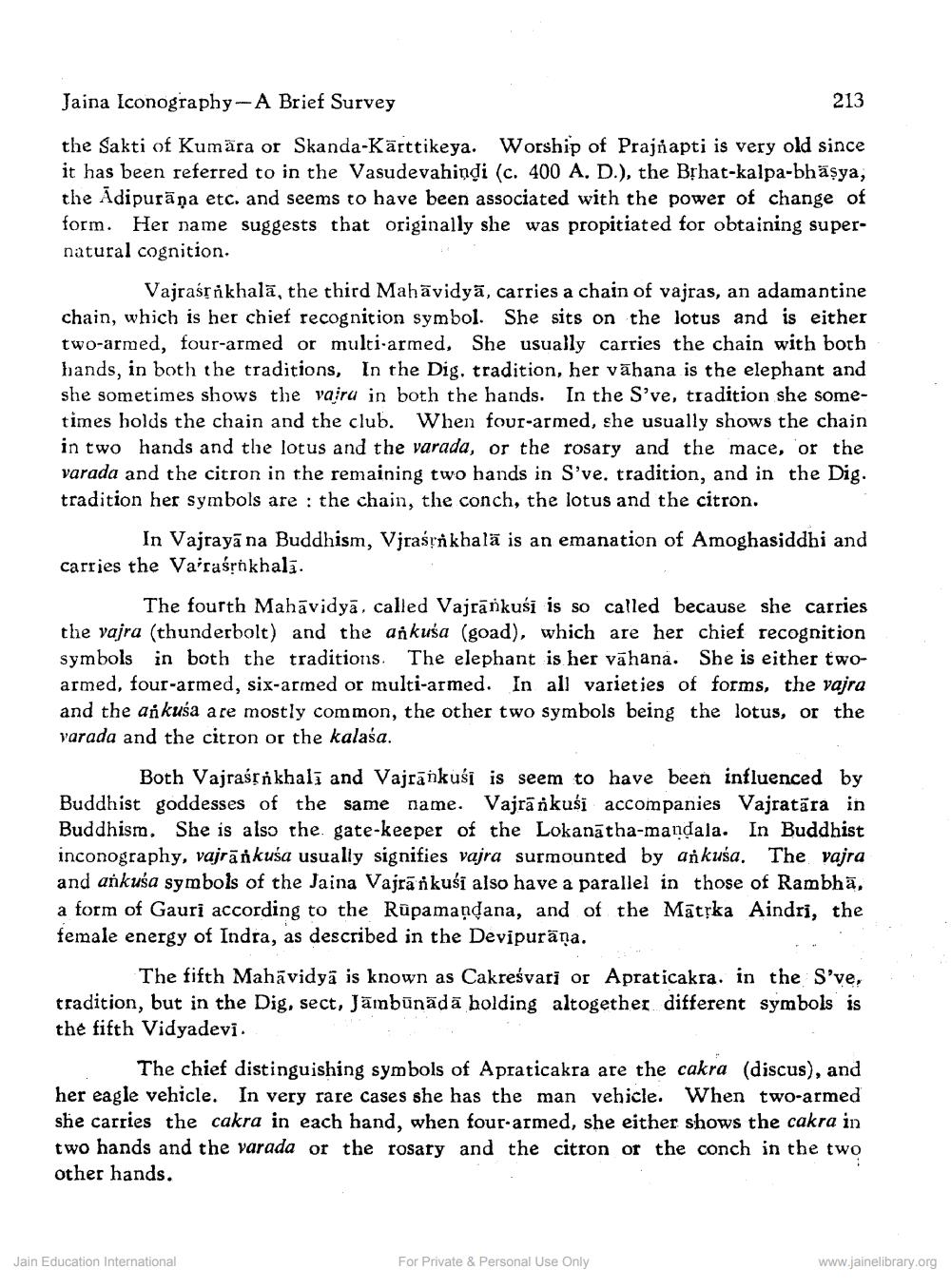________________
Jaina Iconography-A Brief Survey
the Sakti of Kumära or Skanda-Kärttikeya. Worship of Prajñapti is very old since it has been referred to in the Vasudevahindi (c. 400 A. D.), the Bṛhat-kalpa-bhäşya, the Adipurana etc. and seems to have been associated with the power of change of form. Her name suggests that originally she was propitiated for obtaining supernatural cognition.
Vajrasrñkhala, the third Mahavidya, carries a chain of vajras, an adamantine chain, which is her chief recognition symbol. She sits on the lotus and is either two-armed, four-armed or multi-armed, She usually carries the chain with both hands, in both the traditions, In the Dig. tradition, her vähana is the elephant and she sometimes shows the vajra in both the hands. In the S've, tradition she sometimes holds the chain and the club. When four-armed, she usually shows the chain in two hands and the lotus and the varada, or the rosary and the mace, or the varada and the citron in the remaining two hands in S've. tradition, and in the Dig. tradition her symbols are: the chain, the conch, the lotus and the citron.
213
In Vajrayana Buddhism, Vjraśrñkhala is an emanation of Amoghasiddhi and carries the Va'raśrhkhali.
The fourth Mahavidya, called Vajrankusi is so called because she carries the vajra (thunderbolt) and the añkusa (goad), which are her chief recognition symbols in both the traditions. The elephant is her vahana. She is either twoarmed, four-armed, six-armed or multi-armed. In all varieties of forms, the vajra and the añkusa are mostly common, the other two symbols being the lotus, or the varada and the citron or the kalasa.
Both Vajrastikhali and Vajränkusi is seem to have been influenced by Buddhist goddesses of the same name. Vajra nkusi accompanies Vajratāra in Buddhism. She is also the gate-keeper of the Lokanatha-mandala. In Buddhist inconography, vairākuša usually signifies vajra surmounted by añkusa. The vajra and ankusa symbols of the Jaina Vajra ikusi also have a parallel in those of Rambha, a form of Gauri according to the Rupamandana, and of the Matrka Aindri, the female energy of Indra, as described in the Devipuräna.
The fifth Mahavidya is known as Cakreśvari or Apraticakra. in the S've, tradition, but in the Dig, sect, Jambünädä holding altogether different symbols is the fifth Vidyadevi.
The chief distinguishing symbols of Apraticakra are the cakra (discus), and her eagle vehicle. In very rare cases she has the man vehicle. When two-armed she carries the cakra in each hand, when four-armed, she either shows the cakra in two hands and the varada or the rosary and the citron or the conch in the two other hands.
Jain Education International
For Private & Personal Use Only
www.jainelibrary.org




